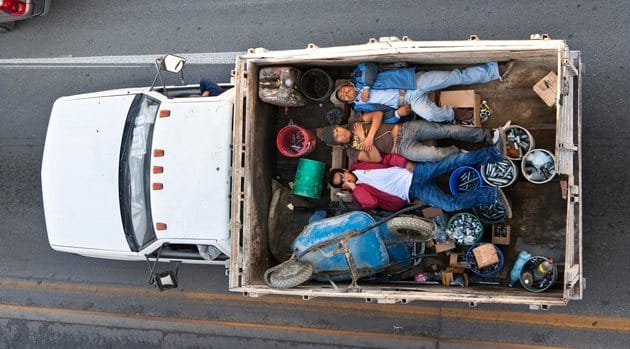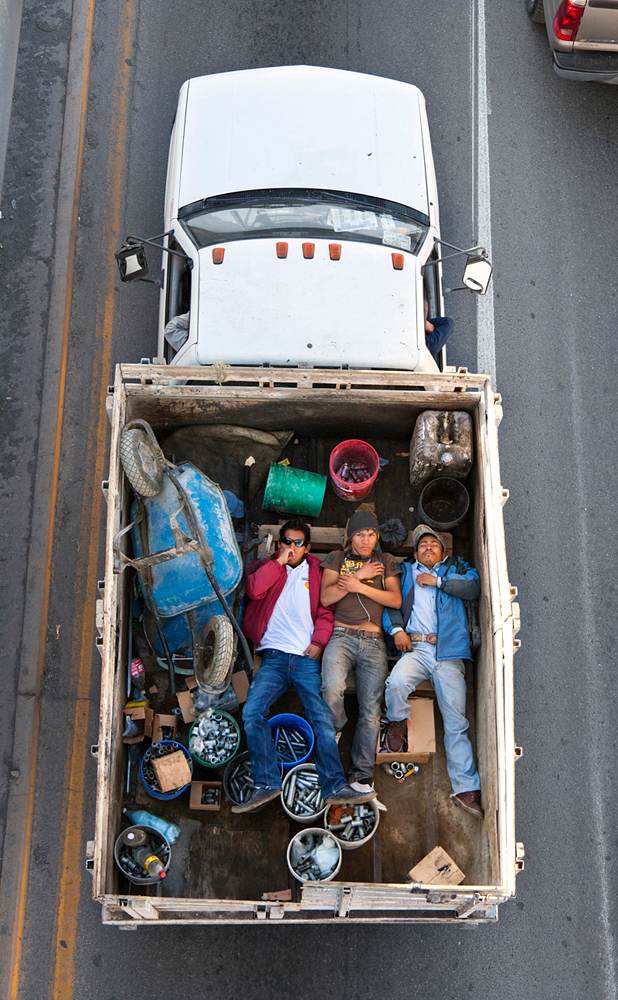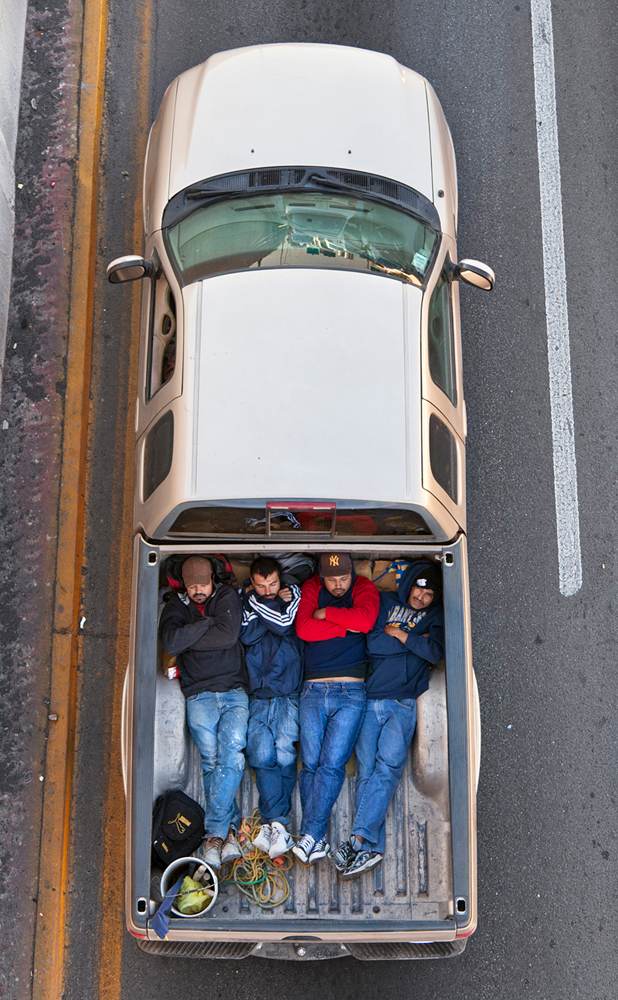Car Poolers
Imagine the people you see on your morning commute—sleepy, bored, stoic. Now picture them jammed together in the bed of a truck, speeding down the highway to work. Photographs of Mexico’s hidden (literally) class of workers.

Interview by Nozlee Samadzadeh
TMN: What inspired you to photograph these commuters?
Alejandro Cartagena: When I first encountered these workers I was doing a commission for Colegio de la Frontera Norte on the uses of the street in Monterrey, Mexico. I was looking for ways to show how people use their vehicles and how they become part of the urban landscape, especially in rush hour. That led me to shoot urban-scapes from overpasses and different elevated areas and eventually to do images of single cars and trucks.
While doing those images, I came across some of these workers and I instantly knew that I would do a project on their commuting practice. By doing the work I felt I could show several things: their working condition, the actual practice of car pooling by workers in Mexico, and especially how this issue relates to the lack of proper urban development and public transport systems in Mexican cities. Even though this car pooling works for them (they save time and money), they are putting their lives at risk in order to secure a job. Continue reading ↓
All images courtesy the artist and Circuit Gallery, all rights reserved.






Interview continued
TMN: Who are these men?
AC: They are construction and municipal workers, landscapers, painters…
TMN: Who’s driving the trucks? Who owns them?
AC: The owners of the trucks are usually co-workers or contractors. I had come across this before. My grandfather used to be a construction worker and would car pool his co-workers to the job. Also, while shooting my previous project, Suburbia Mexicana, the workers building these new houses in the outskirts of the city would show up this way to work.
TMN: From where and to where are they driving?
AC: Most of them are coming from neighboring cities like Escobedo, Apodaca, and Garcia, and are driving to San Pedro Garza Garcia, one of the richest and most economically active cities in the Monterrey Metropolitan Area.
TMN: How do you take these photos?
AC: At first I shot from several places, but I’ve concentrated on one highway. I shoot from an overpass that is some 10 meters above the cars. I try to shoot from 7:00 to 9:30 am. Sometimes it’s quite hard to get the frame as the cars are driving by fast, but I’ve gotten better at spotting them in the distance so I am ready by the time they pass under me.
TMN: Have you spoken to these men about how they feel about their work commute?
AC: I haven’t interviewed them yet!
TMN: Mexican workers aren’t always treated favorably in the U.S., especially illegal immigrants. What is your take on how illegal immigrants are treated in America?
AC: I lived in the U.S. for a year and experienced life along illegal immigrants. I found that they are both treated as co-workers and as people doing wrong. I understand their need for prosperity and how they will do anything to survive and provide money to their families back home. Life in Mexico is not easy: the drug war, kidnapping, lack of jobs, etc. I can’t say I found anything particularly denigrating being done to the people I met, but I am sure it doesn’t always go that way for them.
TMN: What are you working on now?
AC: I am mainly doing this series right now and a grant project in Guadalajara, Mexico. It’s about the portrayal of 27 kilometers of the city that were going to be used for a super highway, and how the project fell through because of the affected communities’ activism to stop the construction.
